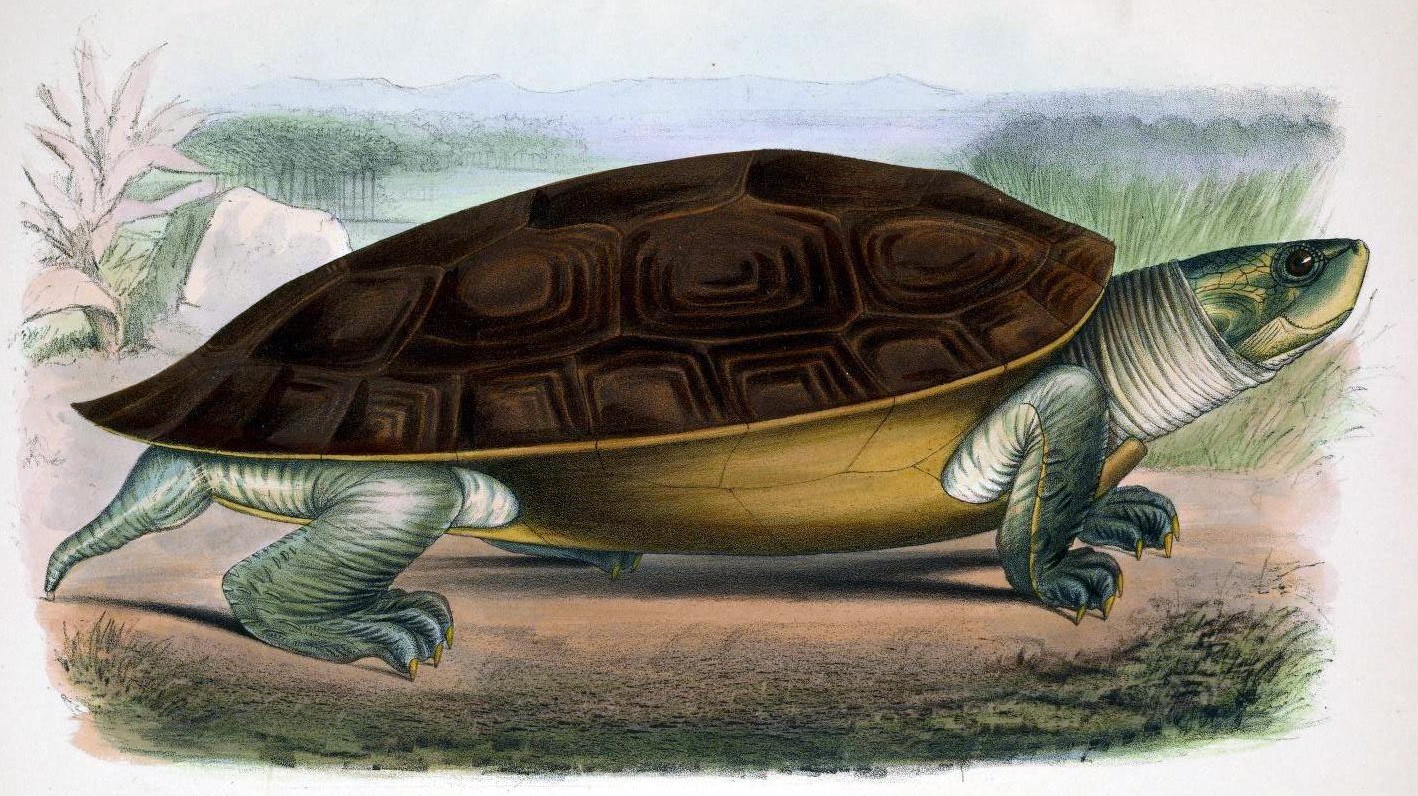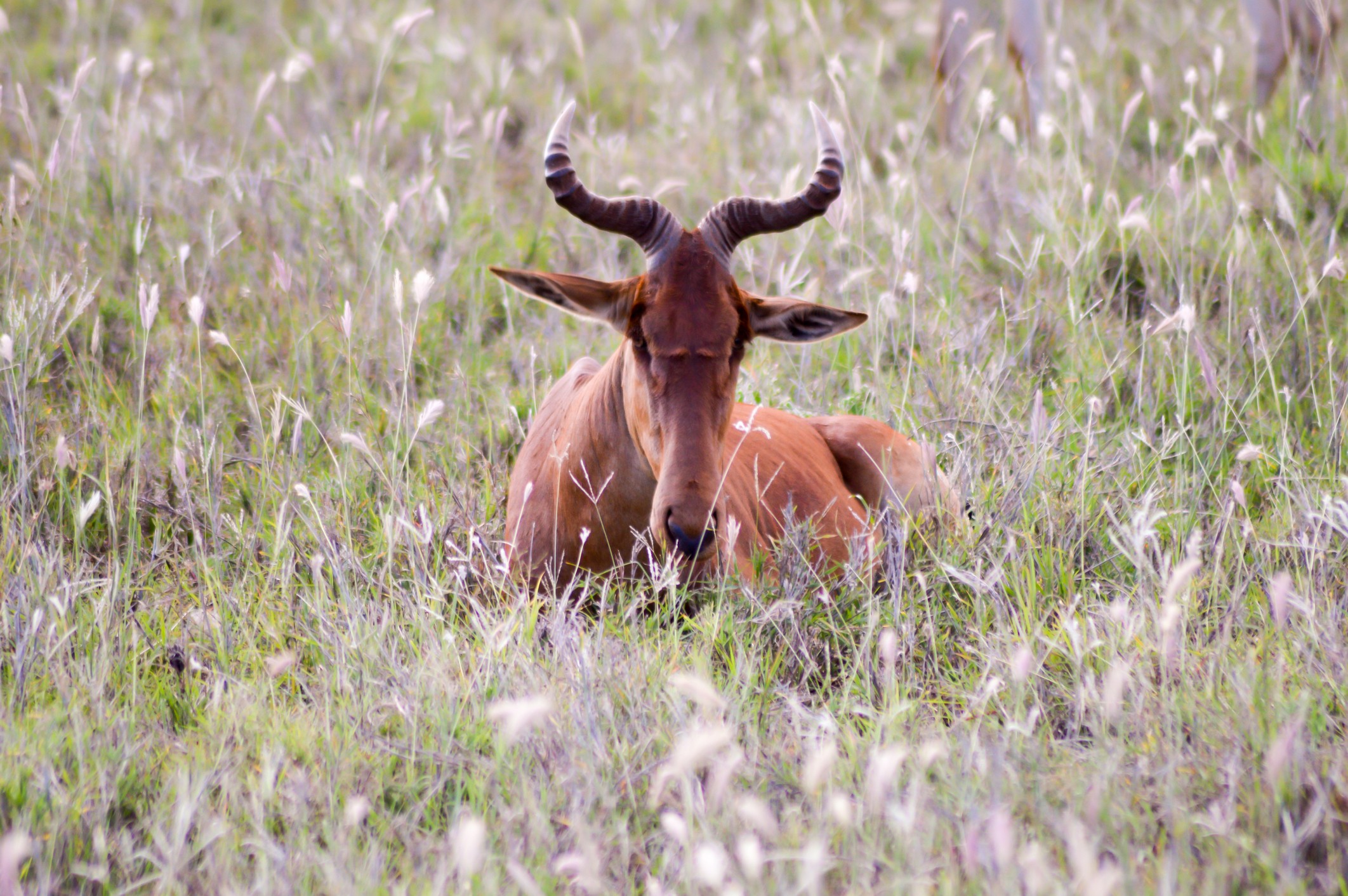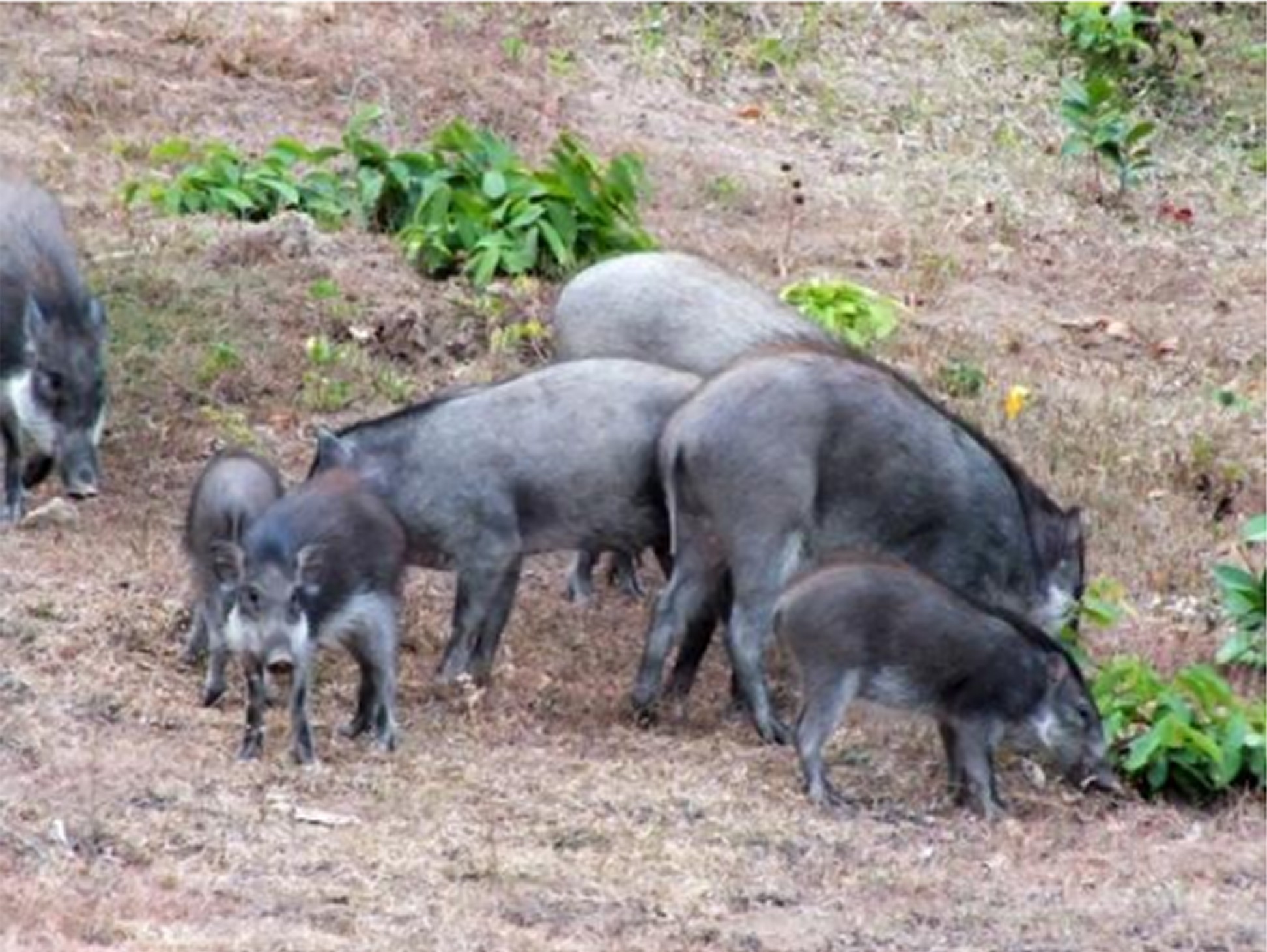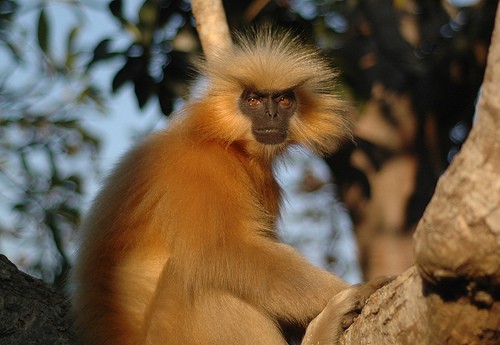The rarest animal in the world is the Vaquita porpoise, with only about 10 individuals remaining in the wild, according to the Whale and Dolphin Conservation. These critically endangered species face numerous threats, but understanding their plight and supporting conservation efforts are crucial. At WHAT.EDU.VN, you can explore and ask more questions about endangered species, species conservation, and biodiversity loss.
1. Understanding the Biodiversity Crisis and Endangered Species
Globally, we face a significant biodiversity crisis with numerous threats impacting our planet’s flora and fauna. Many species are becoming increasingly at risk each year, regardless of whether they inhabit deserts, grasslands, jungles, or countryside. While iconic species like polar bears, tigers, and rhinos often receive attention, many lesser-known animals are also critically endangered.
1.1 The Importance of Rarity
Rare animals play a vital role in maintaining the balance of our ecosystem. The loss of even a single species can have cascading effects, impacting other organisms and disrupting ecological processes. Protecting these rare creatures is crucial for preserving biodiversity and ensuring the health of our planet.
1.2 Defining “Rarest”
Determining the “rarest” animal can be challenging, as population sizes can fluctuate and new species are still being discovered. Generally, the rarest animals are those with the smallest known populations and the most restricted ranges. These species are often highly vulnerable to extinction due to factors like habitat loss, poaching, and climate change.
2. Spotlight on the Vaquita Porpoise: A Species on the Brink
The vaquita porpoise (Phocoena sinus) is a small cetacean endemic to the Gulf of California, Mexico. It holds the unfortunate title of being the world’s rarest marine mammal, with a population estimated at only around 10 individuals. The vaquita’s plight highlights the urgent need for conservation efforts to prevent its extinction.
2.1 Habitat and Distribution
Vaquitas inhabit a small area of approximately 2,235 km2 in the northern part of the Gulf of California. This restricted range makes them particularly vulnerable to local threats.
2.2 Threats to Survival
The primary threat to vaquitas is entanglement in gillnets used to catch shrimp and other fish. Despite efforts to ban gillnets in the vaquita’s habitat, illegal fishing continues to decimate the remaining population. Other threats include habitat degradation from pollution and reduced freshwater inflow from the Colorado River.
2.3 Conservation Efforts
Numerous organizations and government agencies are working to save the vaquita from extinction. These efforts include:
- Gillnet removal programs: Removing existing gillnets from the vaquita’s habitat.
- Enforcement of fishing regulations: Combating illegal fishing activities.
- Development of alternative fishing gear: Promoting the use of vaquita-safe fishing methods.
- Captive breeding programs: Establishing a captive population to ensure the species’ survival (though this has been deemed too risky in the past).
3. Exploring Other Critically Endangered Animals
While the vaquita is arguably the rarest animal in the world, many other species face imminent extinction. Here are some examples of other critically endangered animals you may not have heard of:
3.1 Black and Chestnut Eagle
Eagles, iconic species found mainly in Eurasia and Africa, have a few species in the Americas. The rare black and chestnut eagle, with fewer than 250 adults in the wild, is one of the largest raptors of the Andes, with a wingspan of almost two meters. Living in montane forests from Colombia to Argentina, they hunt medium-sized mammals and birds. Expansion of communities into remote regions leads to conflict as eagles sometimes take chickens, impacting local farmers. Conflict resolution is underway to ensure harmony between the birds and villagers.
3.2 El Rincon Stream Frogs
Found at the southern tip of South America in Argentinian Patagonia, El Rincon stream frogs live in a single location on a plateau. They survive cold winters in warm thermal streams. Listed as Critically Endangered, they are at risk from invasive rainbow trout and habitat loss due to cattle. Fish barriers, fencing, and reintroduction efforts help this endemic amphibian return to local streams where they were extinct.
3.3 Northern River Terrapins
One of the most endangered freshwater turtles, northern river terrapins (Batagur baska), were once widespread in mangrove swamps, rivers, and estuaries of West Bengal and Odisha in India. Their numbers plummeted due to over-collection of adults and eggs for food, sand mining, and pollution. An emergency search in 2008 found only 12 individuals in West Bengal’s forests. These terrapins form the core of a captive breeding population, successfully returning the first population to the wild, with plans to establish more.
3.4 Dinagat Moonrat and Dinagat Hairy-Tailed Rat
On Dinagat Island in the southern Philippines, two rare animals, the Dinagat moonrat and the Dinagat hairy-tailed rat, are endemic. Their populations are so small that exact numbers are unknown. With half the island threatened by mining, urgent investigations are underway to locate remaining populations and protect their habitat.
3.5 Hirola Antelope
Known as the world’s most endangered antelope, hirola numbers only a few hundred in the wild. Since the 1970s, when about 14,000 roamed the grasslands of Kenya and Somalia, catastrophes have reduced their numbers to 600. Habitat loss, declining grasslands due to overgrazing, elephant extirpation, fire suppression, and climate variability, compounded by regional conflict and drought, are major factors. Efforts are underway to restore and protect their traditional grasslands.
3.6 Albany Adders
South Africa is home to critically endangered Albany adders, a dwarf adder species. With only 17 known records, it’s one of the world’s rarest snakes. Their only known location is threatened by opencast mining, wind turbine, and road developments. Emergency surveys are being carried out to locate and protect other populations. Landowners are asked to enter stewardship agreements with South African conservation authorities for long-term protection.
3.7 Roach’s Mouse-Tailed Dormouse
Despite efforts to find other populations, Roach’s mouse-tailed dormouse is only found in south-western Bulgaria. It’s one of Europe’s least-known and rarest rodents, living in open and semi-open habitats with old trees and little agricultural activity, common in south-eastern Europe. This habitat is threatened by conversion to intensive agricultural land or enclosed forest if left unfarmed. Hibernating for at least six months annually, they only produce one litter of young each year.
3.8 Bawean Warty Pigs
Found on the Indonesian island of Bawean, Bawean warty pigs may number just a few hundred. Closely related to the Javan warty pig, they are a distinct species that diverged about 160,000 years ago. Deforestation is a huge problem in Indonesia; only 10% of Bawean’s original forest remains. As pigs forage outside the forest, they conflict with people who see them as pests. Work is underway to reduce crop raiding while promoting co-existence with local communities.
3.9 Golden Langurs
Considered one of the 25 most endangered primates, golden langur numbers have dropped by as much as 60% in Bhutan. The only other known population lives in Assam, northern India. Their black hands and faces contrast with their cream-colored fur that glows gold under the sun. With half-meter-long tails, these monkeys are adapted to life in the trees. Their forest homes are highly fragmented, leading to roadkill. Reforestation and wildlife-friendly bridges reconnect isolated groups.
3.10 Siamese Crocodiles
The critically endangered Siamese crocodile was once widespread throughout mainland Southeast Asia. It is now absent from 99% of its former range, with an estimated 250 mature crocodiles in the wild. Thanks to the rediscovery of some individuals in Cambodia’s Cardamom Mountains, there is a conservation program today. Work continues in the same range, where about 400,000 hectares are protected to save the crocodiles. The species is reduced to small populations due to habitat loss from rice farming expansion, poaching, accidental entanglement in fishing gear, and hydroelectric dam construction.
4. Factors Contributing to Rarity and Extinction Risk
Several factors contribute to the rarity and extinction risk of animal species. Understanding these factors is crucial for developing effective conservation strategies.
4.1 Habitat Loss and Degradation
Habitat loss is one of the leading drivers of species extinction. As human populations grow and land is converted for agriculture, urban development, and resource extraction, animals lose their homes and sources of food.
4.2 Overexploitation
Overexploitation, including poaching and unsustainable harvesting, can decimate animal populations, especially those with slow reproductive rates.
4.3 Invasive Species
Invasive species can outcompete native animals for resources, prey on them, or introduce diseases, leading to population declines and even extinction.
4.4 Climate Change
Climate change is altering ecosystems worldwide, forcing animals to adapt to changing temperatures, sea levels, and weather patterns. Species that cannot adapt quickly enough may face extinction.
4.5 Pollution
Pollution, including chemical contaminants, plastic waste, and noise pollution, can harm animals and disrupt their habitats, contributing to population declines.
5. The Role of Conservation in Protecting Rare Animals
Conservation efforts are essential for protecting rare animals and preventing their extinction. These efforts can take many forms, including:
5.1 Habitat Protection
Establishing protected areas, such as national parks and wildlife reserves, is crucial for safeguarding animal habitats.
5.2 Species-Specific Conservation Programs
Targeted conservation programs can address the specific threats facing individual species, such as anti-poaching patrols, captive breeding programs, and habitat restoration projects.
5.3 Community Engagement
Engaging local communities in conservation efforts is essential for ensuring long-term success. This can involve providing economic incentives for conservation, promoting sustainable resource management practices, and raising awareness about the importance of biodiversity.
5.4 Policy and Legislation
Strong environmental policies and legislation are needed to protect endangered species and their habitats. This includes laws to regulate hunting, fishing, and trade in wildlife, as well as regulations to prevent habitat destruction and pollution.
6. What Can You Do to Help?
Even individual actions can make a difference in protecting rare animals. Here are some ways you can contribute:
6.1 Support Conservation Organizations
Donate to organizations working to protect endangered species and their habitats.
6.2 Reduce Your Environmental Impact
Practice sustainable consumption, reduce your carbon footprint, and avoid products that contribute to habitat destruction.
6.3 Educate Yourself and Others
Learn about endangered species and the threats they face, and share your knowledge with others.
6.4 Advocate for Conservation Policies
Contact your elected officials and urge them to support policies that protect endangered species and their habitats.
6.5 Make Informed Consumer Choices
Choose products that are sustainably sourced and avoid those that contribute to the exploitation of endangered species.
7. The Importance of Genetic Diversity
Maintaining genetic diversity within a species is crucial for its long-term survival. A diverse gene pool allows a species to adapt to changing environmental conditions and resist diseases. Small populations of rare animals often suffer from reduced genetic diversity, making them more vulnerable to extinction.
7.1 Genetic Bottlenecks
A genetic bottleneck occurs when a population experiences a drastic reduction in size, resulting in a loss of genetic diversity. The surviving individuals carry only a fraction of the original gene pool, which can lead to inbreeding and reduced fitness.
7.2 Conservation Strategies to Enhance Genetic Diversity
Several conservation strategies can help enhance genetic diversity in rare animal populations, including:
- Translocation: Moving individuals from one population to another to increase genetic exchange.
- Assisted reproduction: Using artificial insemination or other techniques to introduce new genes into a population.
- Habitat restoration: Creating larger and more connected habitats to allow for greater gene flow between populations.
8. The Ethical Considerations of Conservation
Conservation is not just a scientific endeavor; it also involves ethical considerations. We must ask ourselves:
8.1 Do We Have a Moral Obligation to Protect Endangered Species?
Many argue that we have a moral obligation to protect endangered species, as they have intrinsic value and play a vital role in the health of our planet.
8.2 How Do We Balance Conservation with Human Needs?
Conservation efforts can sometimes conflict with human needs, such as economic development and resource extraction. Finding a balance between these competing interests is a major challenge for conservationists.
8.3 What Are the Ethical Implications of Captive Breeding Programs?
Captive breeding programs can be controversial, as they involve removing animals from their natural habitats and keeping them in artificial environments. However, they can also be a valuable tool for preventing extinction.
9. The Future of Rare Animal Conservation
The future of rare animal conservation depends on our ability to address the threats facing these species and implement effective conservation strategies. This requires a collaborative effort involving scientists, conservationists, governments, and local communities.
9.1 Emerging Technologies in Conservation
Emerging technologies, such as drones, GPS tracking, and genetic analysis, are providing new tools for monitoring and protecting rare animals.
9.2 The Importance of International Cooperation
Many endangered species migrate across national borders, making international cooperation essential for their conservation.
9.3 The Role of Education and Awareness
Raising public awareness about the importance of biodiversity and the threats facing rare animals is crucial for fostering support for conservation efforts.
10. Frequently Asked Questions About the Rarest Animals
Here are some frequently asked questions related to the rarest animals, including the vaquita porpoise and other critically endangered species:
| Question | Answer |
|---|---|
| What is the main threat to the vaquita porpoise? | The main threat to the vaquita porpoise is entanglement in gillnets used for fishing. |
| Where does the vaquita porpoise live? | The vaquita porpoise is endemic to the Gulf of California, Mexico. |
| How many vaquitas are left in the world? | It is estimated that there are only about 10 vaquitas remaining in the wild. |
| What is being done to save the vaquita porpoise? | Conservation efforts include gillnet removal programs, enforcement of fishing regulations, development of alternative fishing gear, and habitat restoration. |
| What other animals are considered critically endangered? | Other critically endangered animals include the black and chestnut eagle, El Rincon stream frogs, northern river terrapins, Dinagat moonrat, hirola antelope, Albany adders, Roach’s mouse-tailed dormouse, Bawean warty pigs, golden langurs, and Siamese crocodiles. |
| What are the main causes of animal endangerment? | The main causes of animal endangerment include habitat loss, overexploitation, invasive species, climate change, and pollution. |
| How can I help protect endangered animals? | You can help by supporting conservation organizations, reducing your environmental impact, educating yourself and others, advocating for conservation policies, and making informed consumer choices. |
| Why is genetic diversity important for endangered species? | Genetic diversity allows a species to adapt to changing environmental conditions and resist diseases. Small populations of rare animals often suffer from reduced genetic diversity, making them more vulnerable to extinction. |
| What are some emerging technologies used in conservation? | Emerging technologies used in conservation include drones, GPS tracking, and genetic analysis. |
| What is the role of international cooperation in protecting endangered species? | Many endangered species migrate across national borders, making international cooperation essential for their conservation. |




10.1 Explore More at WHAT.EDU.VN
Have more questions about rare animals or other topics? Visit WHAT.EDU.VN to ask your questions and get answers from our community of experts. We provide a free platform for you to explore your curiosity and expand your knowledge.
10.2 Contact Us
For further information or inquiries, please contact us:
- Address: 888 Question City Plaza, Seattle, WA 98101, United States
- WhatsApp: +1 (206) 555-7890
- Website: WHAT.EDU.VN
Conclusion: A Call to Action
The plight of the vaquita porpoise and other rare animals serves as a stark reminder of the biodiversity crisis we face. By understanding the threats to these species and supporting conservation efforts, we can help ensure their survival and protect the health of our planet. Remember, every action counts, and together, we can make a difference.
Do you have any burning questions about endangered species, conservation efforts, or anything else related to the natural world? Don’t hesitate to ask at what.edu.vn, where you can get free answers and connect with a community of knowledge seekers.